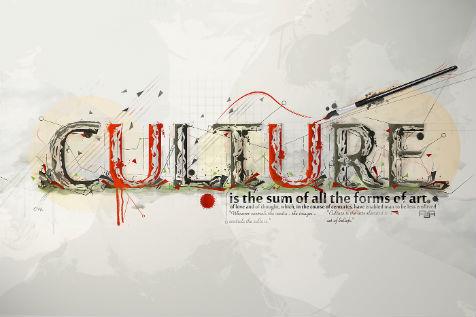Aggregating culture in one department would lead to better measurement, better resourcing and a genuine assessment of cultural impact, argues a key strategiest of Creative Australia.
Julianne Schultz, who this week called for better measurement of the value of the arts, also wants a consolidated Ministry of Culture and cultural impact statements for government policies.
It is time to end having and arts tacked on to another ministry. Over the past few years it has migrated from Communications, to Environment and Heritage, to PMC, to Regional Affairs, back to Environment and is now with Immigration. At each point bodies have been lost, corporate memory dissipated and staff kept busy managing the programs they administer and expectations of the minister.
Allowing arts to be the suffix of another much bigger department may make sense if arts were a small bit of icing on the cake of national life, as was once the case. But the cultural economy is now significant; it reaches into almost everyone’s life every day, so this is no longer sufficient. Similarly depending on the personal commitment and interest of the minister is good, but not sufficient. It runs the risk of maintaining a patronage model, which rarely transcends subsistence.
Most other countries, including those we most like to equate ourselves with, have a Ministry of Culture. Of course there are variations in the nomenclature, only six countries keep arts in the title with culture – Cambodia, Honduras, South Africa, Singapore and Northern Ireland. A handful of countries have ministries for culture and religion (Norway) or culture and Islamic guidance (Iran), or culture and tourism (Greece, Ethiopia, Ontario, Vietnam, South Korea) some like India, The Netherlands and Indonesia put culture and education together. Most simply have a ministry for culture.
I think that this is an extremely good idea and maybe a way of reframing the discussion. We need a Ministry for Culture that aggregates all the areas of arts and cultural activity in one portfolio, under a Cabinet level minister. This would make it easier to find linkages between programs and ensure that the not inconsiderable amount of money allocated in this domain was managed in a way that encouraged connections and ensured measurable outcomes.
At the moment not even all the national collecting institutions answer to the same minister, heritage is in environment, cultural diplomacy and UNESCO are in DFAT, industry assistance for the creative industries is in innovation and climate change, tourism and sport are elsewhere, trade is not linked in any consistent way, broadcasting is in broadband and the digital economy, there are programs in education and health, and regional affairs funds the building facilities and gives prizes for regional arts.
And this is just the beginning. There are cultural activities and arts programs in immigration, Indigenous, communities and other departments – even defence spends hundreds of millions a year on cultural activities.
So this is a domain that is considerably bigger than we see if we just look at the allocations for core arts activities. Pulling them together would signal that this was important economically and socially. We already know that this sector is bigger than agriculture and electricity, that the jobs are growing faster than in many other sectors.
Culture will be plank of the economic future of the country, so this is a good time to seek to maximize it.
If there were a Minister for Culture these activities could be aggregated in a more appropriate way. It would mean that the department would be bigger and better resourced, and not so caught in the territorial imperatives of competing departments and ministers. It would mean that the links between programs could be better established. It would mean that the pressure would be on to find better and more robust forms of measurement. It would signal that the government took its responsibilities for culture seriously and recognized its potential both at home and abroad.
One of the accepted tools of government policy making is to measure impact. In response to changing priorities over the years new policy proposals going to Cabinet have had to have impact statements relating to women, small business, environment and so on. The task of assessing the impact is designed not just to capture information and account for consequences – but to send a signal that this is important. The recent ABS discussion paper on this is an important step, as is the Chief Scientist’s review of the capacity in humanities and social sciences.
I have argued there is a case to be made for measuring the cultural impact of such proposals. Two examples come to mind, the first was the introduction of the NBN, if the cultural impact and possibilities had been factored in at the beginning of that process the game of catch up that has followed might have been avoided and the potential of the platform for cultural activities better realized; similarly the architects have argued that had the potential of good design had been recognized at the beginning of the building the education revolution program it is likely that buildings that drew on the best knowledge of the impact of design on the learning process might have been built in more than a handful of schools.
I know those in Canberra who are responsible for developing such policies throw their hands up at such a suggestion – they do not want another layer, another series of boxes to check. But I think that building a cultural impact statement into the policy process would be revealing and useful. It would force the development of more effective tools of measurement – as has happened with environmental impact statements – which will be needed if this is to be persuasive and enduring.
It would seem to me that from a national government perspective there is a cultural dimension in the changing nature of Australian society thanks to the massive migration program of the past decade, a cultural dimension that is more than window dressing in relation to the Asian Century, a cultural dimension to innovation in the economy and education, and a crucial cultural dimension in terms of relations with the First Peoples. Tapping into this is important – and may help provide pathways to resolving what seem to be intractable problems.
My concern is that as long as the arts and cultural sector is seen as an optional extra that is nice to have, its potential to impact on these big mainstream areas of government, will be funded accordingly – that is, with not very much money, dependent on the whim or persuasiveness of the minister of the day.
The big economic ministries understand this, and are skeptical about the ability to account for the public value of arts and culture. Excuse my cynicism, but I think there is a concern that if the data stacks up, it may mean cutting elsewhere.
I concede that this is a rather circular.
I suggest though that there is an argument for putting all the cultural activities of government together in one department, a Ministry for Culture. It would not be huge, but it would not be inconsequential either. It would include arts, sport, heritage, national collecting institutions, broadcasting, screen, tourism, science would be core elements. It would need to have strong links to education, industry, trade, foreign affairs, Indigenous, communities, immigration, regional affairs, digital economy and health. It would need a Cabinet level minister and a skilled and effective head of department with deep connections across the bureaucracy.
Such a department would be able to address the cultural sector as a whole, bring a fresh and critical perspective to the sustainability of the component parts with rigorous economic analysis by taking the lead on developing the tools to measure public value. Its ethos would be sympathetic to cultural potential. It would complement not replicate agencies, like the Australia Council and Screen Australia that allocate funds – so that the arm’s length relationship between cultural production and government, which is so highly valued would be maintained.
It could facilitate links between the big institutions and commercial industries, better understand and address the obstacles to economic sustainability for individuals and across the patchwork of the cultural economy. It would recognise that this is a growing and increasingly important part of the economy.
In short it would replicate what other departments do in relation to other parts of the economy.
One of the things that has struck me is that we are not good at joining up the links that exist between various public programs. This is not confined to the cultural sector, but because for so long it has been seen as a synonym for arts, public investment does not always realise its potential.
Two examples – a lot of public money that goes into educating young people in the creative arts and creative industries, but there are almost no training opportunities provided in the public sector that will help turn talented young people into the industry leaders of the future. I understand that training is not a particular priority, but failing to close the circle by requiring publicly funded cultural organisations to take trainees, as happens in other areas of the economy, seems shortsighted. The Asian Century discussion is another case – the report included some references to culture, but it was not really central. The contrast is sharp with other countries in the region. David Pledger described the central role of culture in the modernization of the South Korean economy in his current Platform Paper. He reports that the Koreans realized that by strengthening engagement with Korean culture they would create a platform not just for expression but for innovation, the Koreans are not alone in this. The recent awards for arts in Asia again underlined the dichotomy here. Clearly there is great work being done by many artists and organisations who take the national priority seriously despite poorly defined pathways for public support.
There are plenty of areas in which a Ministry of Culture could usefully engage: innovation, education, social cohesion, tourism, trade, diplomacy and heritage.
We all know that when we visit other countries their heritage is on display. Despite the excellent work done in a handful of galleries and museums we are quite poor at this. We should be finding ways to note and celebrate the layers of heritage in tangible ways – acknowledging the past in a way that inspires people to find out more in a way that speaks to an Australian sensibility. Who for instance knows the Aboriginal names of the islands in Sydney Harbour? Why does Captain Flinders’ cat Trim have a sculpture at the Library, but not Bungaree the man who accompanied Flinders whom he called the first Australian? Would many of the thousands of people who walk past the stature of Ben Chifley in the epicenter of commercial banking appreciate the irony that he was the prime minister who wanted to nationalize the banks.
I could be wrong, it could be that culture just happens, there is no place for public funding, no need for accountability or seeking to ensure more effective outcomes – but that is not an argument that applies to any other sector of the economy.
So I think it is time to give it a go – to embrace culture as a right available to us as creators and consumers, to put the arts at its centre, to find appropriate ways of measuring the public value that is created, to celebrate our heritage and to recognise that this is the domain in which many of the best and most interesting jobs in the future will be.
This article is excerpted from Professor Schultz’s speech Where to from here…after the National Cultural Policy as part of the Currency House Art and Public Life series.






